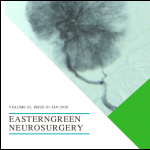Knowledge and Practice among Nurses of Traction in Patients: In a Tertiary Care Center
DOI:
https://doi.org/10.3126/egn.v2i1.27463Keywords:
Nursing care, Orthopaedic trauma, Complications, TractionAbstract
Background and purpose: The role of nursing care among the traction patients is vital and they should be competent, experienced and educated well about the traction devices used and care to minimize the traction associated complications and infections. This study was designed to access the knowledge and practice regarding care and management of the patients with traction in orthopedic trauma by Nurses.
Material and method: A cross sectional descriptive study was conducted on 100 eligible nursing staffs from Kathmandu Medical College Teaching Hospital. Non-probability purposive sampling technique and a self administered structured questionnaire were used to collect data. The statistical analysis was done by using the SPSS version 16. The association between the demographic factors was analyzed by using chi square test.
Result: The working area and traction training has significant relation to knowledge and other, such as age, education, work experience, worked in orthopedic ward has no significance. There is adequate knowledge as the percentage value is 88 and practice regarding care of the patient on traction is 98%.
Conclusion: The knowledge regarding traction care seems sufficient in this study and every orthopedic nursing should be master in traction knowledge, application and nursing care to acquire early patient recovery without significant deformity and complications.
Downloads
Downloads
Published
How to Cite
Issue
Section
License
Copyright (c) 2020 Eastern Green Neurosurgery

This work is licensed under a Creative Commons Attribution 4.0 International License.




